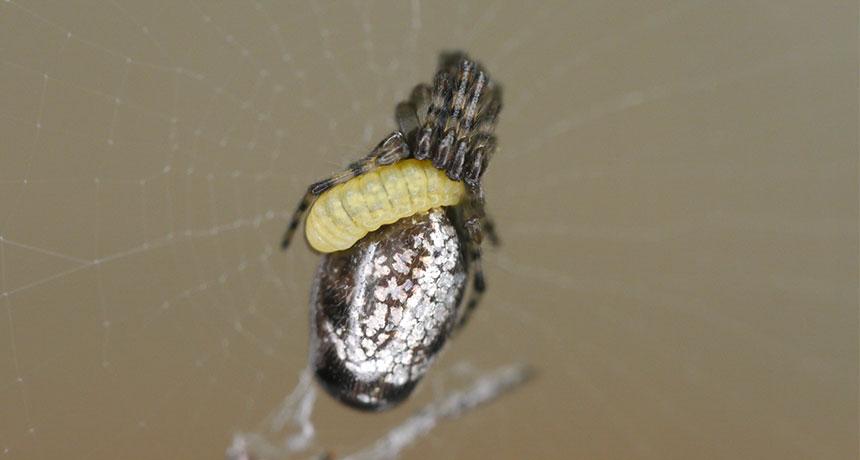-
Tips for becoming a good boxer - November 6, 2020
-
7 expert tips for making your hens night a memorable one - November 6, 2020
-
5 reasons to host your Christmas party on a cruise boat - November 6, 2020
-
What to do when you’re charged with a crime - November 6, 2020
-
Should you get one or multiple dogs? Here’s all you need to know - November 3, 2020
-
A Guide: How to Build Your Very Own Magic Mirror - February 14, 2019
-
Our Top Inspirational Baseball Stars - November 24, 2018
-
Five Tech Tools That Will Help You Turn Your Blog into a Business - November 24, 2018
-
How to Indulge on Vacation without Expanding Your Waist - November 9, 2018
-
5 Strategies for Businesses to Appeal to Today’s Increasingly Mobile-Crazed Customers - November 9, 2018
Wasps Can Mind Control Spiders by Making Them Zombie Slaves
An expert in the parasitic lifestyles of insects, Professor Austin said the Kobe University research published on Thursday in The Journal of Experimental Biology, was a “really cool study” which perfectly illustrated what is known in biology circles as host manipulation, a common behaviour of parasitic wasps.
Advertisement
The specially designed wasp nursery has thus become the place of demise for the spiders.
The spider acts as day care for the parasitic wasp baby and the small insect will suck the guts and blood from inside the body of the spider, ultimately leading the spider to die.
This manipulative behavior is also seen in other parasitic organisms that often take advantage of their hosts for their own benefit.
“The spider normally builds a retreat for itself to hide in when it is moulting and vulnerable, but here the spider is building the retreat when the wasp wants it, not when the spider is moulting and needs it”, he said. This was done by laying the wasp eggs either on the spiders or within their body.
A team of scientists in Japan has discovered how a particular species of wasp uses natural secretions of its body to force larger spiders to build it a home only to have the unsuspecting arachnids killed after the labor is done. This will happen right before the larvae are about to pupate, the researchers noted during their study.
When the larvae reached its last stage of development, it hijacks the spider’s body to create stronger webs.
“The big unknown is whether it is the larvae injecting something into the spider, the female wasp is injecting the venom or a combination of the two which allows the wasp to manipulate the spider”, Professor Austin said.
One possible explanation that Dr. Takasuka suggested was that the larvae inject a substance like a hormone into the Cyclosa argenteoalba spiders that causes them to believe it is time for them to molt. As they lay in their new nest, the hatched wasps lure the spiders in the web, where they kill them.
The Japanese researchers searched for and found over 1,600 Cyclosa argenteoalba spiders in south-central Japan in the cities of Sasayama and Tamba. Once the unique style of web is fully built, the wasp larvae move in and use the cocoon to fully pupate.
This wasp can be found in certain parts of Australia and it is not the only one that can prompt behavioral changes.
Advertisement
While studying wild-caught, parasitized C. argenteoalba spiders in captivity, the researchers noticed that zombie spiders all follow similar construction patterns and produce similar, simple webs like those used in moulting.





























